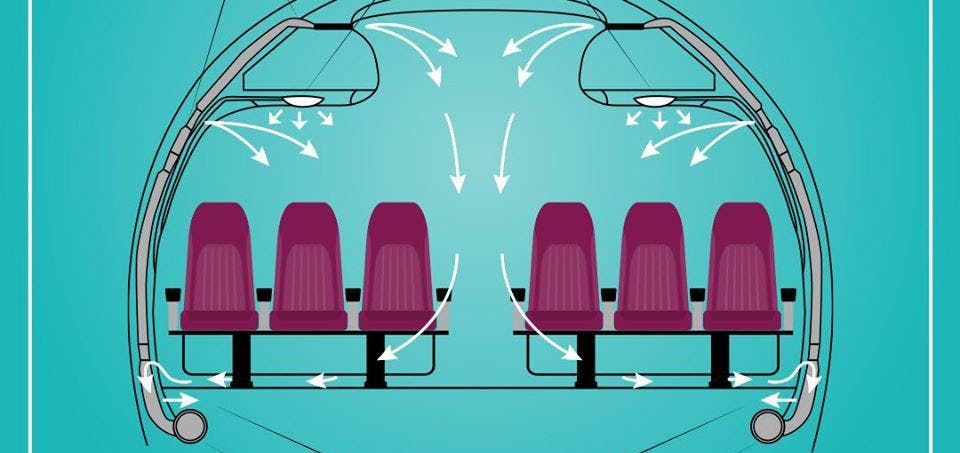
7 reasons why air travel is safer than you think

Mark Holmes
1. Cabin air is recycled frequently
It is a common misconception that cabin air is circulated through the airplane resulting in passengers picking up other people’s germs.
Modern aircraft have very efficient systems for introducing fresh air, filtering stale air and ejecting 50% of the combined result every 2/3 minutes.
This compares with a typical office environment where air is commonly exchanged 4 times an hour.
2. Covid-19 is filtered from the air
Aircraft use hospital-grade air filters. HEPA (high-efficiency particulate air) filters remove 99.97% of particles including viruses. This includes Covid-19 as explained by Tim Heffernan at Wirecutter.
The air circulated in an aircraft cabin is 50% filtered through HEPA filters and the other 50% is ejected through valves. Although the cabin is always a blend of filtered and fresh air the resulting blend is recycled so frequently the risks are low.
3. Cabin air pours downwards
The video below from Boeing shows how air is introduced into an aircraft and circulated. Importantly, air enters the cabin from the ceiling and flows downwards where it is then recycled.
This avoids air moving lengthways up or down the cabin spreading infections.
4. Restricted movement onboard
Passengers are encouraged not to leave their seats while onboard an aircraft. Some airlines don’t allow the toilets to be used.
5. Face protection and PPE
Passengers and crew are required to wear face protection and cabin crew will have PPE (personal protective equipment). Guidance from the CDC (U.S. Center for Disease Control and Prevention) shows cabin crew how to prevent the spread of disease on commercial aircraft.
6. Rigorous cleaning of aircraft
Airlines are taking measures to rigorously clean aircraft after every flight. Easyjet started flying in June, clean their aircraft every day with disinfectant that provides 24-hour surface protection.
7. Screening passengers
Hong Kong airport has introduced cleaning robots that take the temperature of passengers in a booth, which then sprays them with a sanitising product.